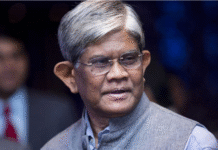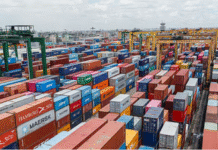Economic prospects for Bangladesh and Sri Lanka, in contrast to the rest of South Asia, remained favourable despite a moderate slowdown last year, says a United Nations report.
Strong growth in private investment and consumption, backed by a steady increase in remittances, contributed to economic expansion in the two countries.
Titled “World Economic Situation and Prospects 2013 (WESP)”, the report was unveiled on Thursday in seven cities across the world. Its first chapter was pre-released in New York in December last year.
It says Bangladesh’s GDP grew by 6.2 percent in 2012. The rate was second to Sri Lanka’s, which was the fastest in the region at 6.5 percent.
According to WESP, Bangladesh will post a 6.3 percent growth in 2013 and 6.4 percent in 2014.
India’s economy, which represents almost three quarters of the region’s GDP, slowed markedly in the past two years. Annual growth declined from more than 9 percent in 2010 to 5.5 percent in 2012.
Economic growth in South Asia during 2012 fell to its slowest pace in a decade, but it is projected to recover in 2013, the report says.
Gross domestic product in the region expanded by only 4.4 percent last year, after growing by 5.8 percent in the year before. Going forward, growth is projected to accelerate to 5.0 percent next year and 5.7 percent in 2014, led by a gradual recovery in India.
“Persistent high inflation, political uncertainties, and transport and energy constraints weighed on household consumption and business investment in 2012. At the same time, the exports of most countries in the region were hit by the slowdown in developed and emerging economies,” the report adds.
GDP growth in India will accelerate in 2013 and 2014, because of stronger growth of exports and capital investment, notes WESP.
Nepal and Pakistan continued to experience subdued growth as ongoing political instability and security concerns weighed on domestic demand, the report says. In Pakistan, total investment has fallen for four consecutive years.
Consumer price inflation averaged 11.6 percent in the region in 2012, slightly up from 11.2 percent in 2011. The report attributes the renewed rise in inflation to several factors: droughts in parts of the region; higher world food prices; significant depreciation of local currencies; and increases in administered fuel and electricity prices.
However, Bangladesh and Pakistan experienced moderate declines in inflation in 2012.
In the outlook, consumer price inflation is projected to decline slightly in most economies, averaging 10.6 percent in 2013 and 9.9 percent in 2014 for the region. More stable local currencies, lower global food prices and slower money supply growth are expected to reduce price pressures. However, persistently high inflation expectations, severe supply bottlenecks and the need to further raise administered energy prices will limit progress in reducing inflation.
Workers’ remittance flows to Bangladesh, Pakistan and Sri Lanka continued to increase rapidly in 2012, partially offsetting the large trade deficits.
The report notes that South Asia struggled with deep-rooted structural challenges in its labour markets. These challenges include the dominance of low-productivity jobs in the large informal sector, high shares of working poor, low female participation rates and high youth unemployment.
According to WESP, downside risks to the economic outlook for South Asia were related to continued global weakness and to regional or domestic vulnerabilities. A further economic downturn in the US or Europe or a hard landing of China’s economy would further weaken South Asia’s exports, while also reducing inflows from workers’ remittances. Widening current-account deficits, coupled with lower portfolio capital inflows, could add pressure on the balance of payments, possibly requiring contractionary policy adjustment. Political instability and deteriorating security conditions represent downside risks for several countries, notably the Islamic Republic of Iran, Nepal and Pakistan.
The report — jointly produced by Development Policy and Analysis Division, the UN Conference on Trade and Development (UNCTAD) and the five United Nations Regional Commissions — is one of the most highly anticipated economic reports from the UN. It provides an overview of recent global economic performance and short-term prospects for the world economy.










